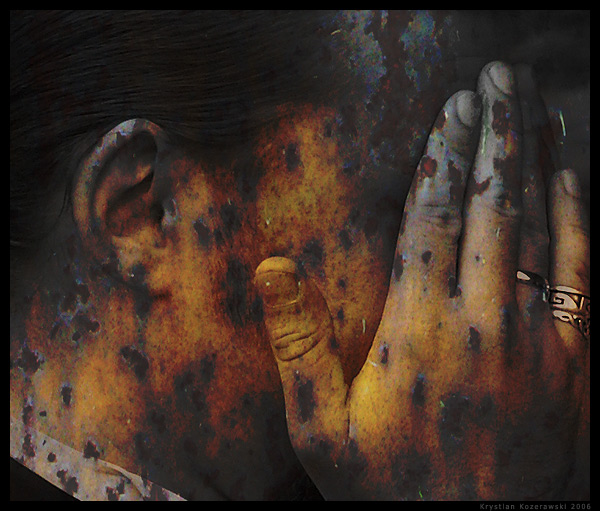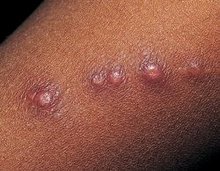Flea Disease If You Please

Fleas are a pestilence to mankind. Their blood feud has been going on for centuries. A certain variety of flea was actually responsible for the widespread death and devastation wrought throughout the Black Death’s reign of terror in the 1300s. These days, most people don’t worry too much about catching the plague, but fleas are still carriers of this and other terrible and debilitating flea diseases. For the sake of public health and safety, this public service announcement is here to inform you of the dangers that can result from unrestricted flea bites and flea disease.
Cat Scratch Fever
 Despite the incredible guitar talents of Ted Nugent, this particular flea disease is no picnic. Better known in the medical community by the name of Bartonella henselae, (not quite as catchy as the common vernacular) Cat Scratch Fever is transmitted via flea bite, and it preys on weak immune system and can result in serious complications for the victims. It has little to no effect on cats that contract the infection, but it plays havoc with humans. Symptoms include but are not limited to: fatigue, headache, fever, swelling of the lymph nodes, weight loss, sore throat, and a lack of appetite. Someone with the infection should also see a blister or bump form at the site of the infection, which is usually caused by a scratch or bite from a cat, hence the well thought out name.
Despite the incredible guitar talents of Ted Nugent, this particular flea disease is no picnic. Better known in the medical community by the name of Bartonella henselae, (not quite as catchy as the common vernacular) Cat Scratch Fever is transmitted via flea bite, and it preys on weak immune system and can result in serious complications for the victims. It has little to no effect on cats that contract the infection, but it plays havoc with humans. Symptoms include but are not limited to: fatigue, headache, fever, swelling of the lymph nodes, weight loss, sore throat, and a lack of appetite. Someone with the infection should also see a blister or bump form at the site of the infection, which is usually caused by a scratch or bite from a cat, hence the well thought out name.
The Bubonic Plague
Believe it or not, peo ple actually still catch this medieval epidemic, and it’s no ring around the rosy. Guess how it’s contracted. Pat yourself on the back if you answered flea bites. If you paid any attention in high school history, you probably remember the symptoms of the Black Death: gangrene, malaise, fever, grotesquely smooth bumps and boils, and oh yeah—Death. Luckily, medical science has come a ways since the dark ages, and there are antibiotic treatments that keep this flea disease in check.
ple actually still catch this medieval epidemic, and it’s no ring around the rosy. Guess how it’s contracted. Pat yourself on the back if you answered flea bites. If you paid any attention in high school history, you probably remember the symptoms of the Black Death: gangrene, malaise, fever, grotesquely smooth bumps and boils, and oh yeah—Death. Luckily, medical science has come a ways since the dark ages, and there are antibiotic treatments that keep this flea disease in check.Flea Borne Typhus







 All posts
All posts Tips and Tricks
Tips and Tricks Health and Welling
Health and Welling Ürün İncelemeleri
Ürün İncelemeleri Funny and Quirky
Funny and Quirky





